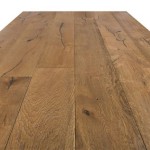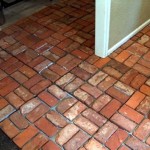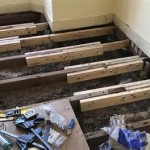Engineered Wood Flooring: Uncovering the Essentials
Engineered wood flooring, a blend of natural wood and innovative engineering, has become a popular choice for residential and commercial spaces. Understanding its unique characteristics and benefits is crucial in making an informed decision when selecting flooring for your home or business.
Composition and Construction
Engineered wood flooring comprises a thin layer of real wood, known as the veneer, bonded to a core made of multiple layers of high-density fiberboard or plywood. The veneer provides the natural beauty and character of hardwood, while the core ensures stability and durability.
Dimensional Stability
Compared to solid hardwood flooring, engineered wood is dimensionally more stable due to its multi-layered construction. Changes in temperature and humidity are less likely to cause expansion or contraction, resulting in fewer gaps and buckling.
Installation Versatility
Engineered wood flooring offers versatility in installation options. It can be nailed, glued, or floated over an underlayment. The floatation method, where planks are mechanically locked together, is particularly suitable for DIY projects or over existing subfloors.
Water Resistance
While not waterproof, engineered wood flooring exhibits improved water resistance compared to solid hardwood. The multiple-layer structure and factory-applied finishes help protect it from moisture penetration.
Environmental Benefits
Engineered wood flooring contributes to sustainability. By using a thin layer of real wood, it reduces the need for harvesting full trees. Additionally, the core materials often contain recycled content, making it an environmentally responsible choice.
Durability and Longevity
With proper care and maintenance, engineered wood flooring can last for decades. The wear layer thickness determines its durability and is typically measured in millimeters. A thicker wear layer provides better resistance to scratches and dents.
Cost Considerations
Engineered wood flooring generally falls within a broader price range than solid hardwood. However, factors such as wood species, veneer thickness, and installation method influence its cost.
Maintenance and Care
Maintenance for engineered wood flooring is relatively straightforward. Regular sweeping and vacuuming, along with occasional damp mopping, will keep it looking its best. Avoid abrasive cleaners or excessive moisture to prevent damage.
Conclusion
Engineered wood flooring is a versatile and durable option that combines the beauty of natural wood with the stability of现代材料. Understanding its composition, benefits, and maintenance requirements will help you make an informed choice for your flooring needs.

14 X 180mm Tanami Oak Brushed Oiled Engineered Wood Flooring

The Ultimate Guide To Engineered Hardwood Flooring Precision

What You Need To Know About Engineered Hardwood Flooring Renaissance Floors

Bellawood Artisan 5 8 In Geneva White Oak Engineered Hardwood Flooring 7 Wide Ll

Quick Step Engineered Wood Floors Red Floor

Why Invest On Engineered Wood Flooring Blog Floorsave

Bellawood 3 8 In Bora Peak Hickory Engineered Hardwood Flooring 6 5 Wide Ll

Diffe Hardwood Flooring Types

Engineered Wood Vs Solid Hardwood

Engineered Wood Flooring Free Samples Ted Todd








